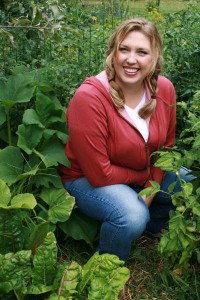Podcast: Play in new window | Download
Subscribe: Apple Podcasts | Podcast Index | RSS | More
Today, you’re invited to inhale and enjoy the fragrance of flowers, herbs, and foliage. Stefani Bittner of Homestead Design Collective uses sensory plants as a way to immerse her clients in nature. She is the co-author of forthcoming book, “The Fragrant Flower Garden: Growing, Arranging, and Preserving Natural Scents,” and we’re delighted to learn from her.
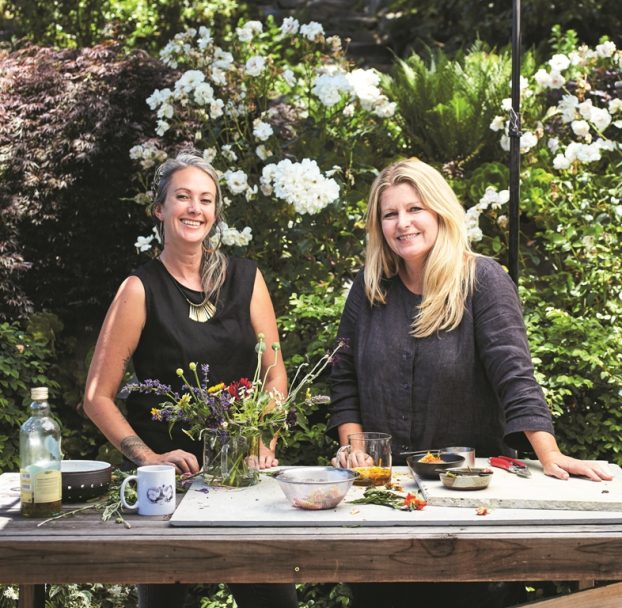
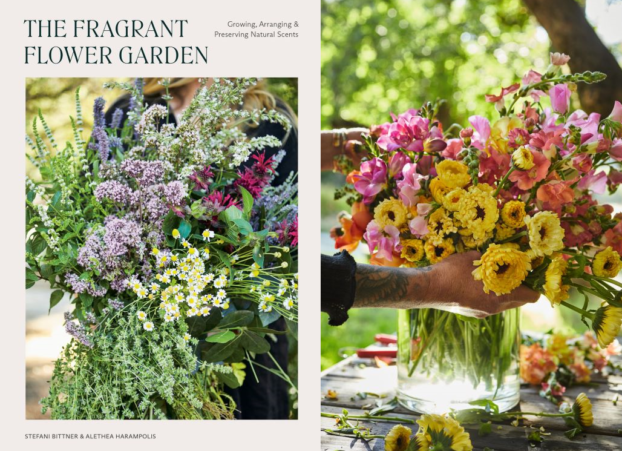
Welcome to Stefani Bitter, returning for her second appearance on the Slow Flowers Podcast. A garden designer and Slow Flowers member, Stefani is the owner of Homestead Design Collective, based in Lafayette, California. Follow the link below to listen to my 2017 interview with Stephanie on the publication of Harvest – Unexpected projects using 47 extraordinary garden plants.
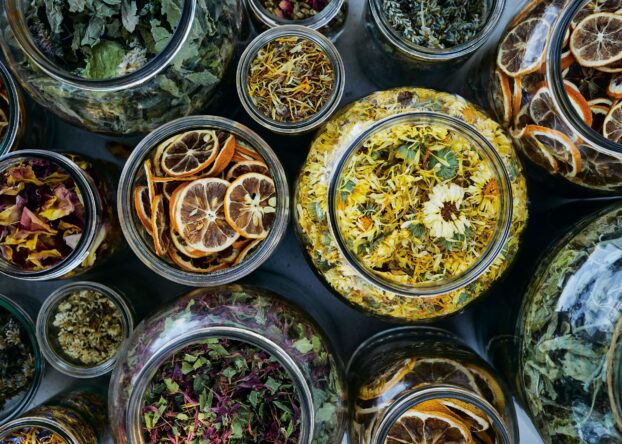
She appeared on the episode with co-author Alethea Harampolis, and they have collaborated on the new book, “The Fragrant Flower Garden: Growing, Arranging, and Preserving Natural Scents” (Ten Speed Press, 2024). The Fragrant Flower Garden invites gardeners and growers to design with fragrance in mind and encourages readers to choose plants that can be smelled, awakening the senses.
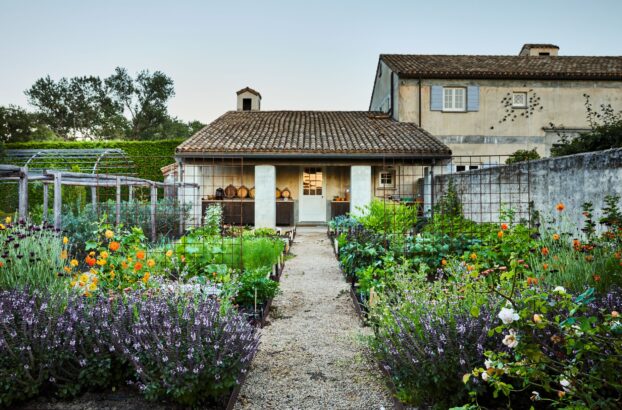
By connecting people with fragrance in the garden and vase – or by preserving fragrance for longer enjoyment — we have a richer, more visceral relationshp with nature, they authors say. This means making floral teas, natural perfumes, flower tinctures, modern potpourris, and more applications for scented plants. The idea of creating beauty products from the garden appeals to anyone who desires a non-synthetic alternative to the plethora of chemicals used in beauty and bath products. “Keep in mind that scent is subjective, emotive, and personal,” Stefani points out.
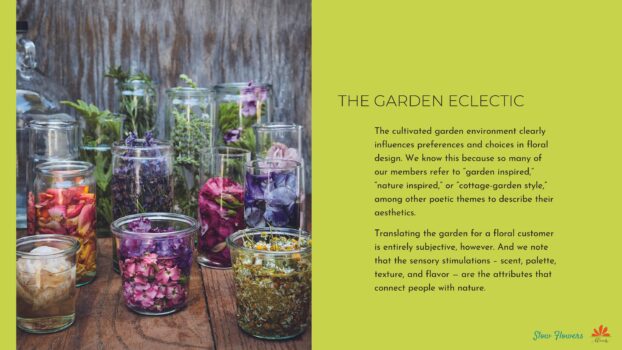
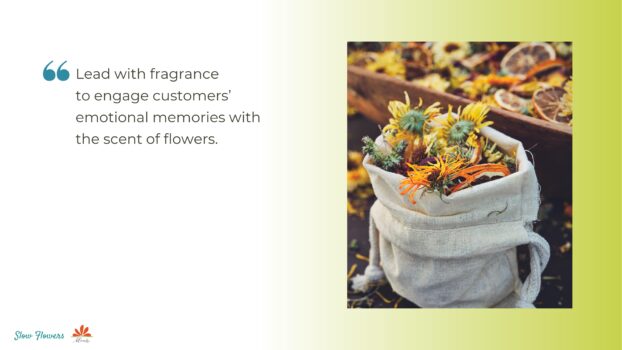
I’m a huge fan of this book and its mission – to engage with plants through the senses – especially scent. When Robin Avni and I were collecting our top themes for the 2024 Slow Flowers Floral Insights & Industry Forecast, we wanted to include fragrant flowers and gardens. Stefani generously shared a preview of the new book, along with photography by David Fenton, which we highlighted in Insight #7 – the Garden Eclectic. In our insight, we encouraged flower farmers, gardeners, and florists – to lead with fragrance as a way to engage customers’ emotional memories with the scent of flowers.
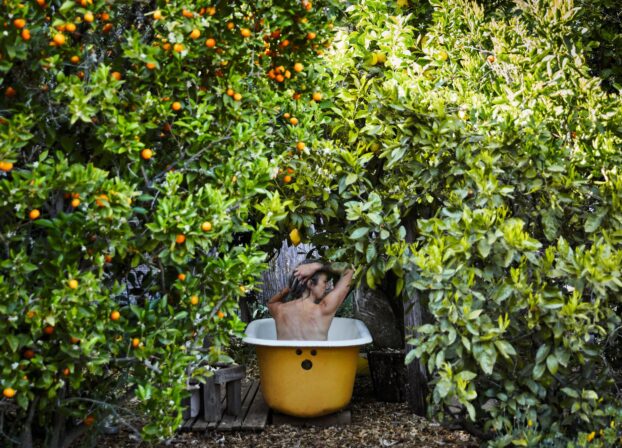
“You can preserve the scent, perhaps making a flower tincture. You can make perfume, a hydrosol, or an updated potpourri,” Stefani suggests and several projects are included in the book to introduce the idea of “preserving fragrance.”
As Stefani and Alethea write, floral customers are not farmers, but they are inspired by the farm, and they want to translate what they see into their lifestyle. “Just like food, they want to enjoy garden scents, and that’s what really speaks to them about those sensory bouquets.”
Find and follow Homestead Design Collective on Instagram
Take a virtual tour of Trulli Trazzonara, Stefani’s vacation rental in Puglia, Italy. Talk about agrotourism! I am so enchanted by this destination and how she plans to integrate her design and teaching into an Italian lifestyle!
Thank you to our Sponsors
This show is brought to you by Slowflowers.com, the free, online directory to more than 750 florists, shops, and studios who design with local, seasonal and sustainable flowers and to the farms that grow those blooms. It’s the conscious choice for buying and sending flowers.
Thank you to Longfield Gardens, which provides home gardeners with high quality flower bulbs and perennials. Their online store offers plants for every region and every season, from tulips and daffodils to dahlias, caladiums and amaryllis. Check out the full catalog at Longfield Gardens at longfield-gardens.com.
Thank you to Rooted Farmers. Rooted Farmers works exclusively with local growers to put the highest-quality specialty cut flowers in floral customers’ hands. When you partner with Rooted Farmers, you are investing in your community, and you can expect a commitment to excellence in return. Learn more at RootedFarmers.com.
Thank you to Johnny’s Selected Seeds, an employee-owned company that provides our industry the best flower, herb and vegetable seeds — supplied to farms large and small and even backyard cutting gardens like mine. Find the full catalog of flower seeds and bulbs at johnnyseeds.com.
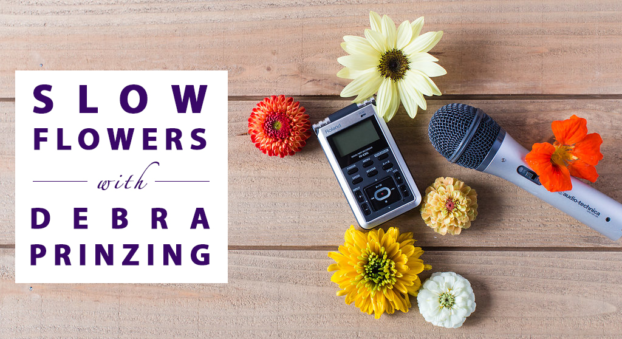
Thank you for joining me today! The Slow Flowers Podcast is a member-supported endeavor, downloaded more than one million times by listeners like you. Thank you for listening, commenting and sharing – it means so much. As our movement gains more supporters and more passionate participants who believe in the importance of our domestic cut flower industry, the momentum is contagious. I know you feel it, too. If you’re new to our weekly Show and our long-running Podcast, check out all of our resources at SlowFlowersSociety.com
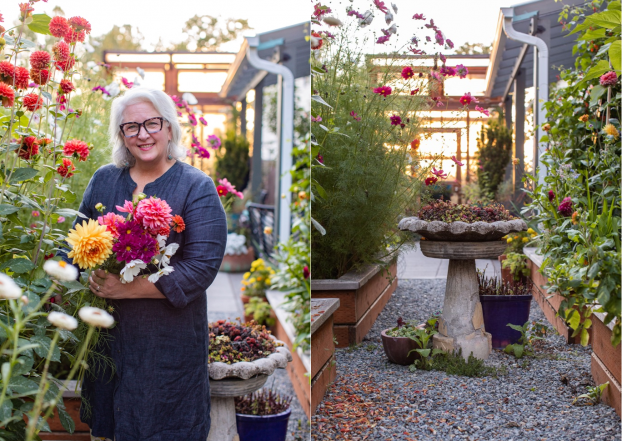
I’m Debra Prinzing, host and producer of the Slow Flowers Show & Podcast. The Slow Flowers Podcast is engineered and edited by Andrew Brenlan. The content and opinions expressed here are either mine alone or those of my guests alone, independent of any podcast sponsor or other person, company or organization. Next week, you’re invited to join me in putting more Slow Flowers on the table, one stem, one vase at a time. Thanks so much for joining us today and I’ll see you next week!
Music Credits:
Drone Pine; Gaena; Rue Severine
by Blue Dot Sessions
http://www.sessions.blue
Lovely
by Tryad
http://tryad.bandcamp.com/album/instrumentals
http://creativecommons.org/licenses/by-sa/3.0/
In The Field
audionautix.com









 While it may seem as if über-hostess
While it may seem as if über-hostess 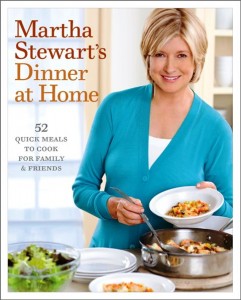 BOOK DETAILS:
BOOK DETAILS: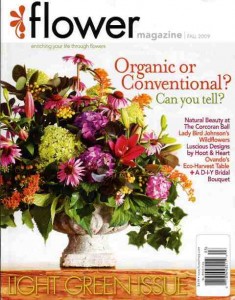 A big thanks to
A big thanks to 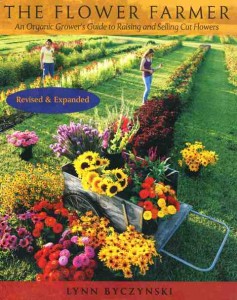 The Flower Farmer: An Organic Grower’s Guide to Raising and Selling Cut Flowers (Revised & Expanded) by Lynn Byczynski (Chelsea Green Publishing, 2008), $35.
The Flower Farmer: An Organic Grower’s Guide to Raising and Selling Cut Flowers (Revised & Expanded) by Lynn Byczynski (Chelsea Green Publishing, 2008), $35.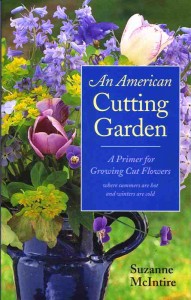 An American Cutting Garden: A Primer for Growing Cut Flowers, by Suzanne McIntire (University of Virginia Press, 2002), $16.95.
An American Cutting Garden: A Primer for Growing Cut Flowers, by Suzanne McIntire (University of Virginia Press, 2002), $16.95.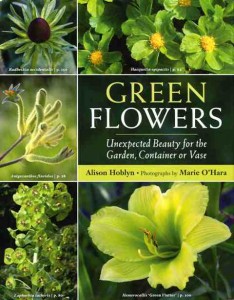 Green Flowers: Unexpected Beauty for the Garden, Container or Vase, by Alison Hoblyn with photographs by Marie O’Hara (Timber Press, 2009), $24.95.
Green Flowers: Unexpected Beauty for the Garden, Container or Vase, by Alison Hoblyn with photographs by Marie O’Hara (Timber Press, 2009), $24.95.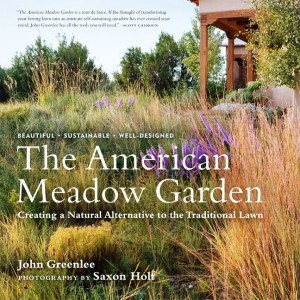 The American Meadow Garden: Creating a Natural Alternative to the Traditional Lawn, by John Greenlee with photography by Saxon Holt (Timber Press, 2009), $39.95.
The American Meadow Garden: Creating a Natural Alternative to the Traditional Lawn, by John Greenlee with photography by Saxon Holt (Timber Press, 2009), $39.95.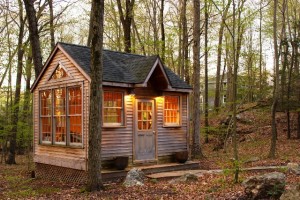
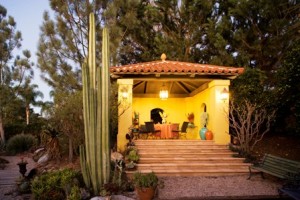
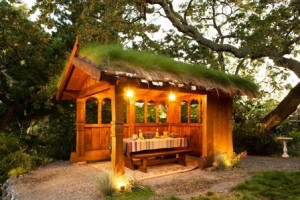
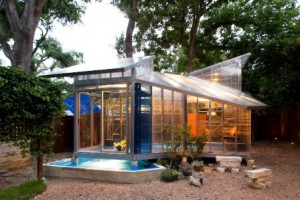
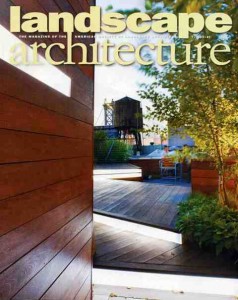 Wow – a nice, little review popped up in the July issue of Landscape Architecture magazine’s “noteworthy” column.
Wow – a nice, little review popped up in the July issue of Landscape Architecture magazine’s “noteworthy” column.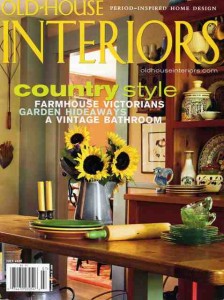 My Stylish Shed partner, the very talented
My Stylish Shed partner, the very talented 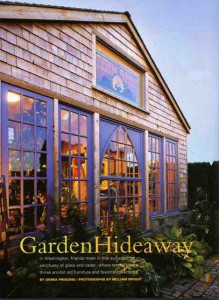
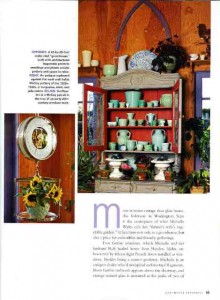 Her design process was anything but logical, Michelle admits. “You can be unrealistic and impractical when you’re making a garden building,” she says.
Her design process was anything but logical, Michelle admits. “You can be unrealistic and impractical when you’re making a garden building,” she says.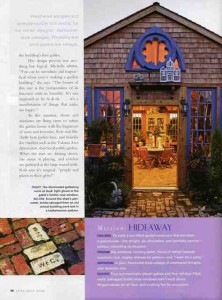 Challenge: To build a sun-filled garden sanctuary that emulates a greenhouse – lots of light, air, circulation, and humidity control – without mimicking its structure.
Challenge: To build a sun-filled garden sanctuary that emulates a greenhouse – lots of light, air, circulation, and humidity control – without mimicking its structure.
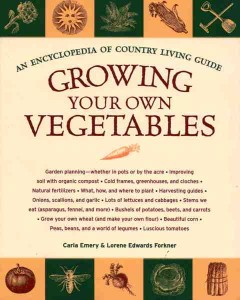 It’s a good thing that Lorene was a back-to-the-earth gal long before modern-day foodies who are just discovering the joys and benefits of tending to their own edible plants.
It’s a good thing that Lorene was a back-to-the-earth gal long before modern-day foodies who are just discovering the joys and benefits of tending to their own edible plants.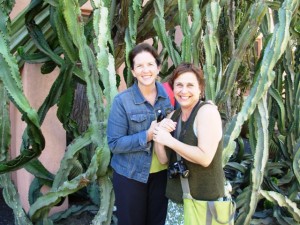
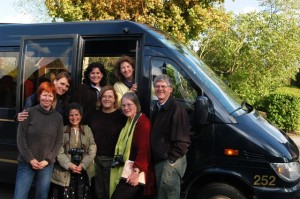
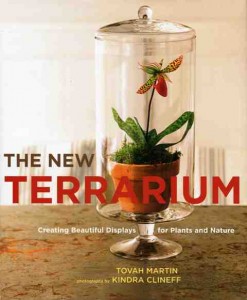 So now, I’m the lucky recipient of newest Tovah Martin book, by all counts, her 13th title. The New Terrarium: Creating Beautiful Displays for Plants and Nature, was published on March 3rd by
So now, I’m the lucky recipient of newest Tovah Martin book, by all counts, her 13th title. The New Terrarium: Creating Beautiful Displays for Plants and Nature, was published on March 3rd by 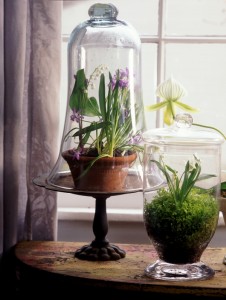
![tovah2 A Wardian case with a deep base simplifies planting directly in the case. Kindra Clineff photograph]](https://www.slowflowerspodcast.com/wp-content/uploads/2009/03/tovah2-298x300.jpg)

